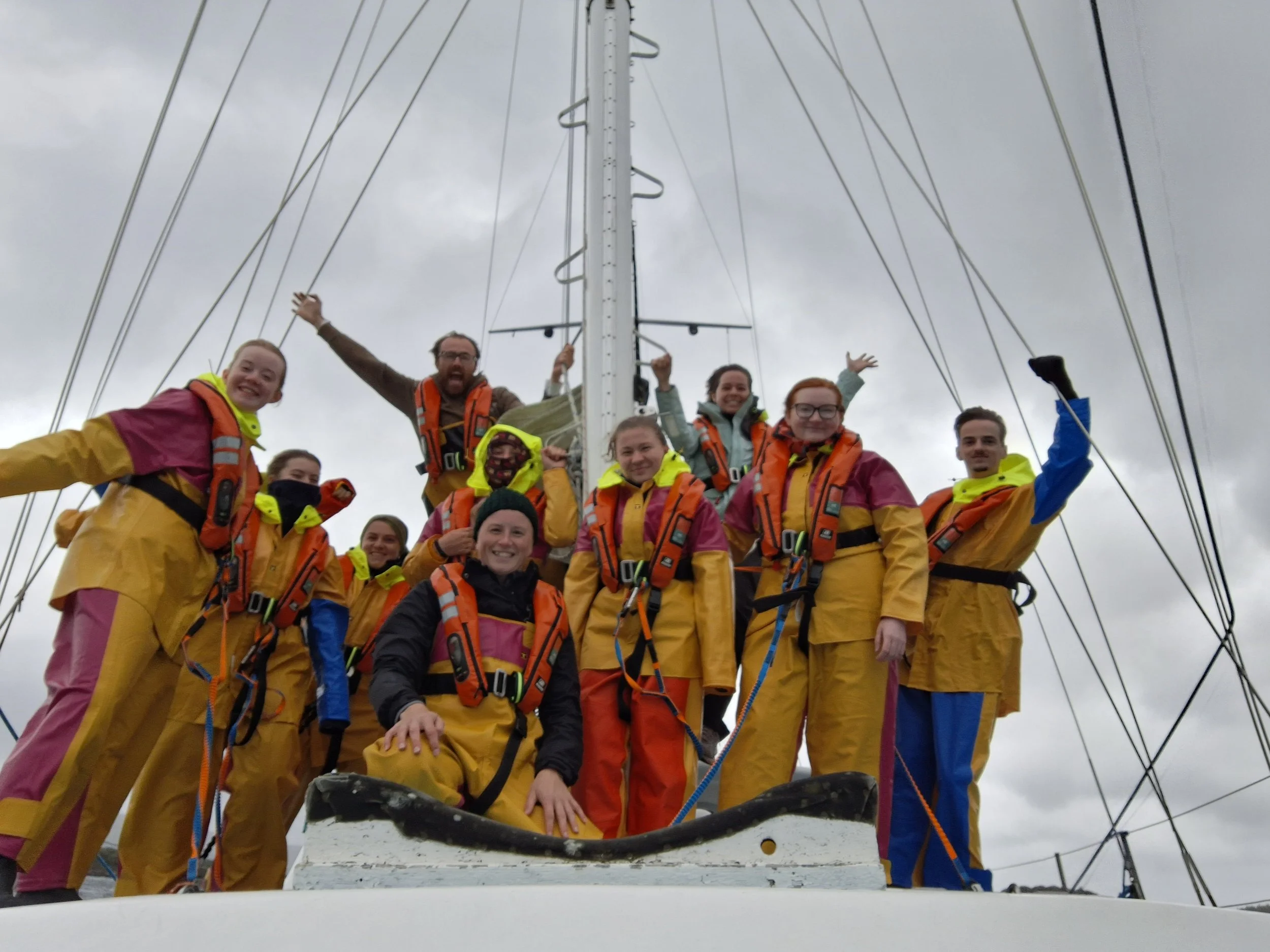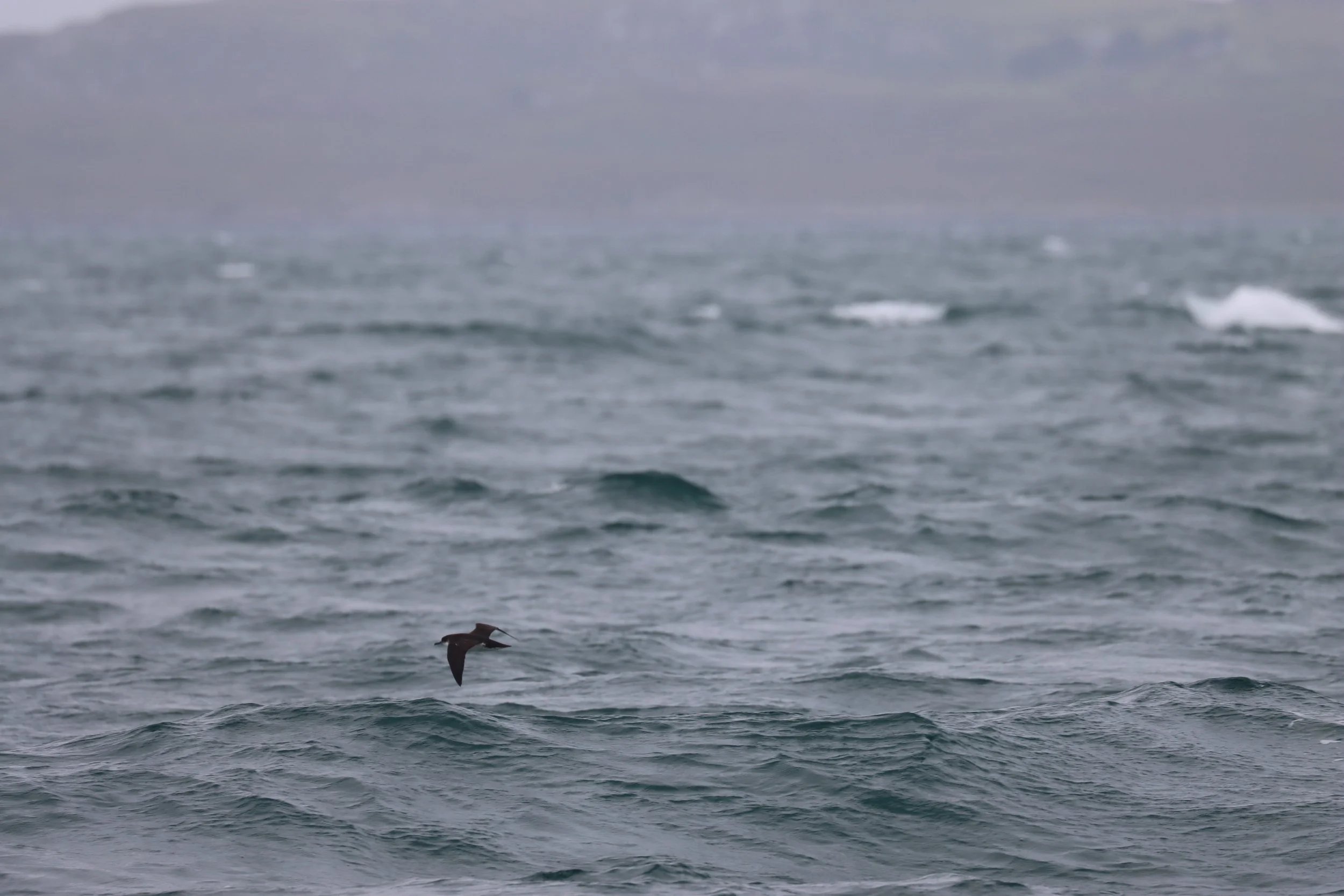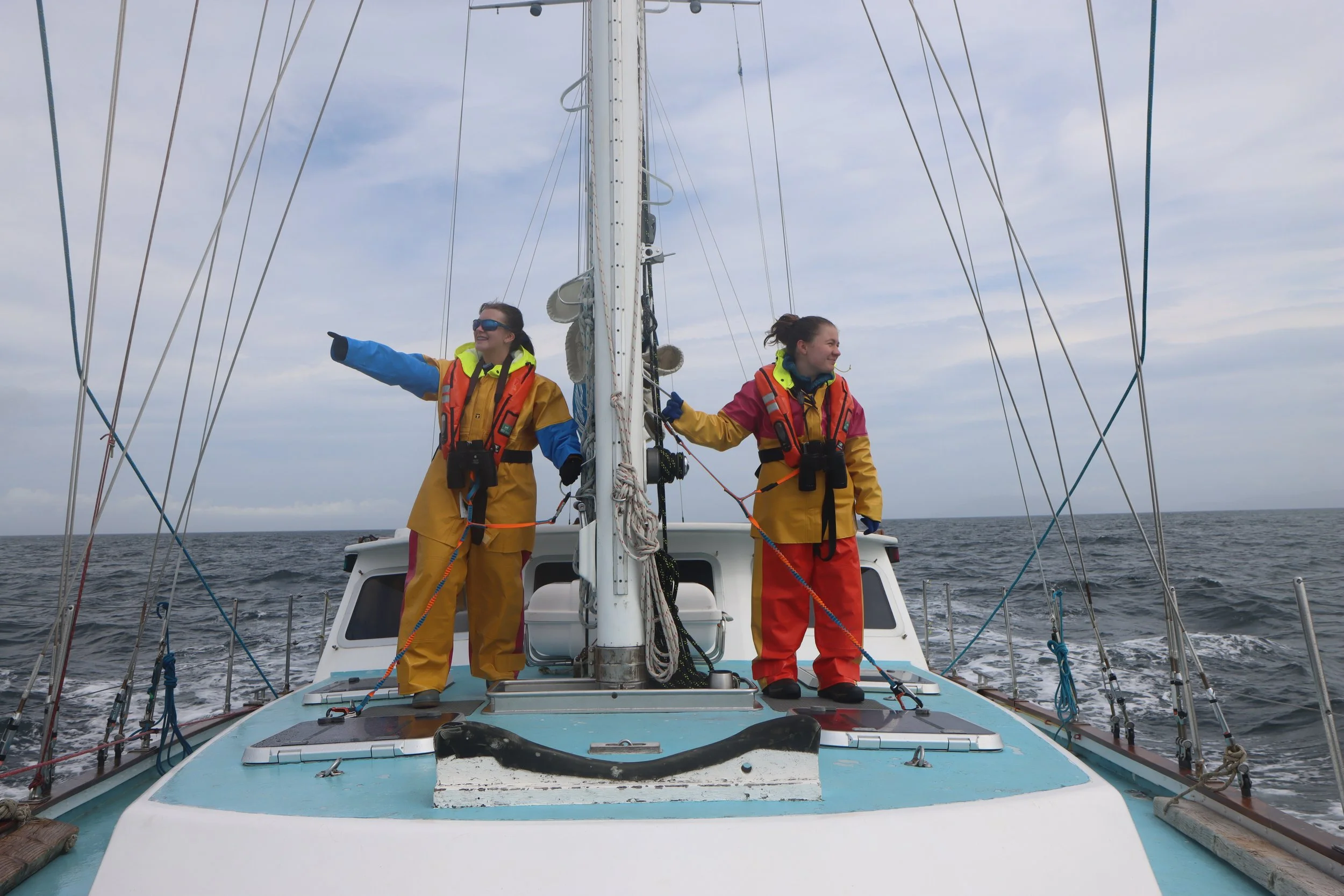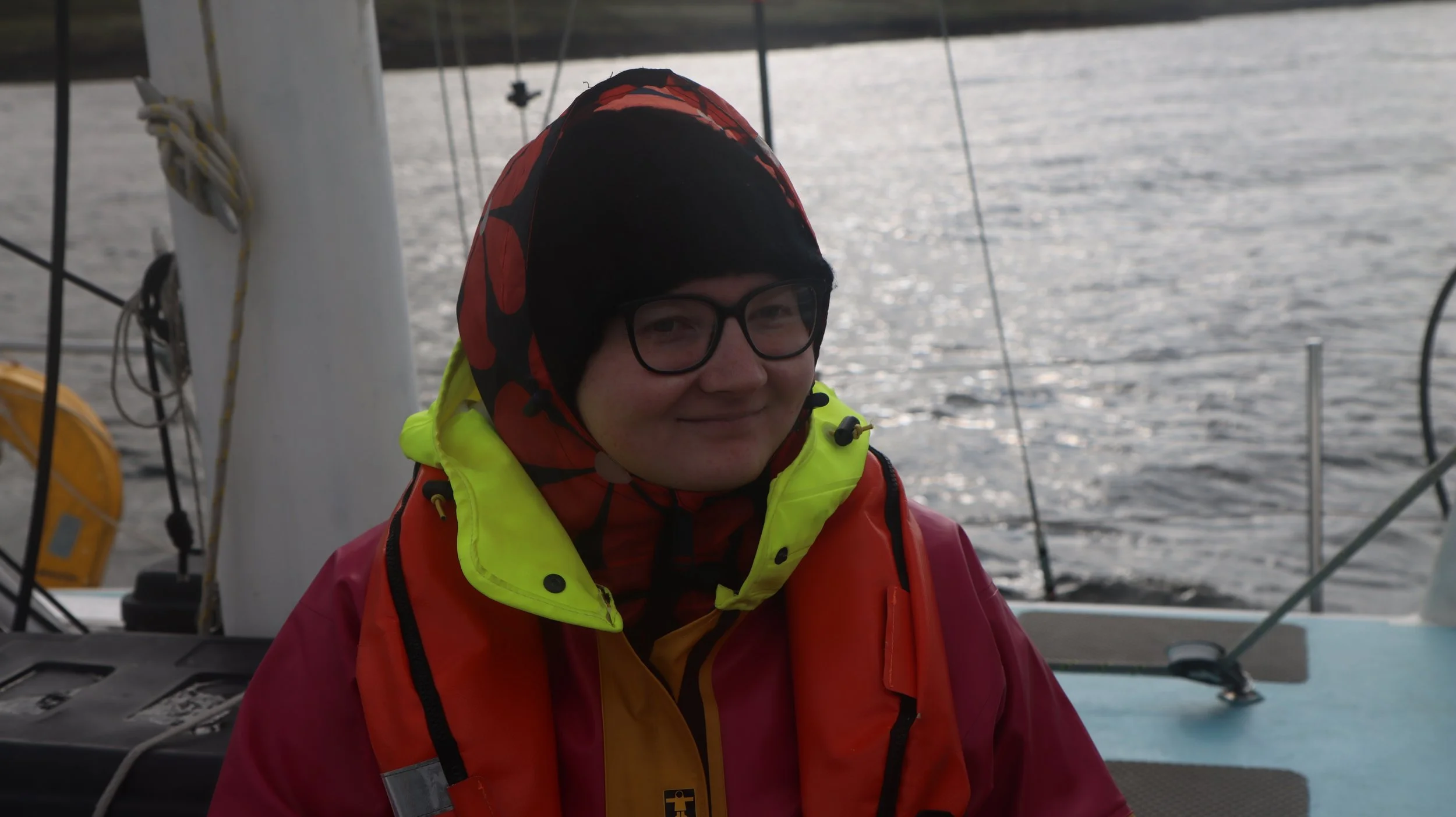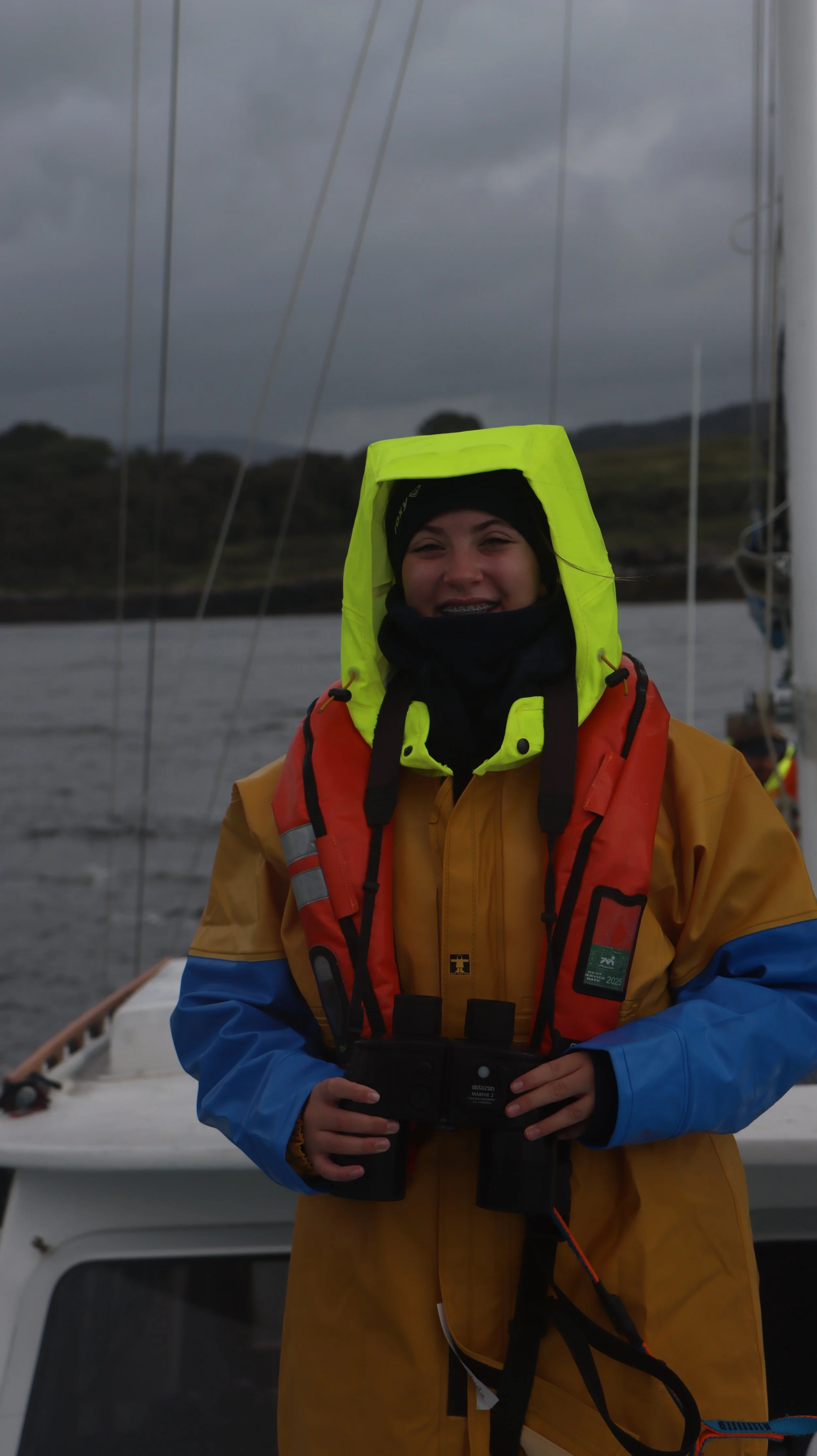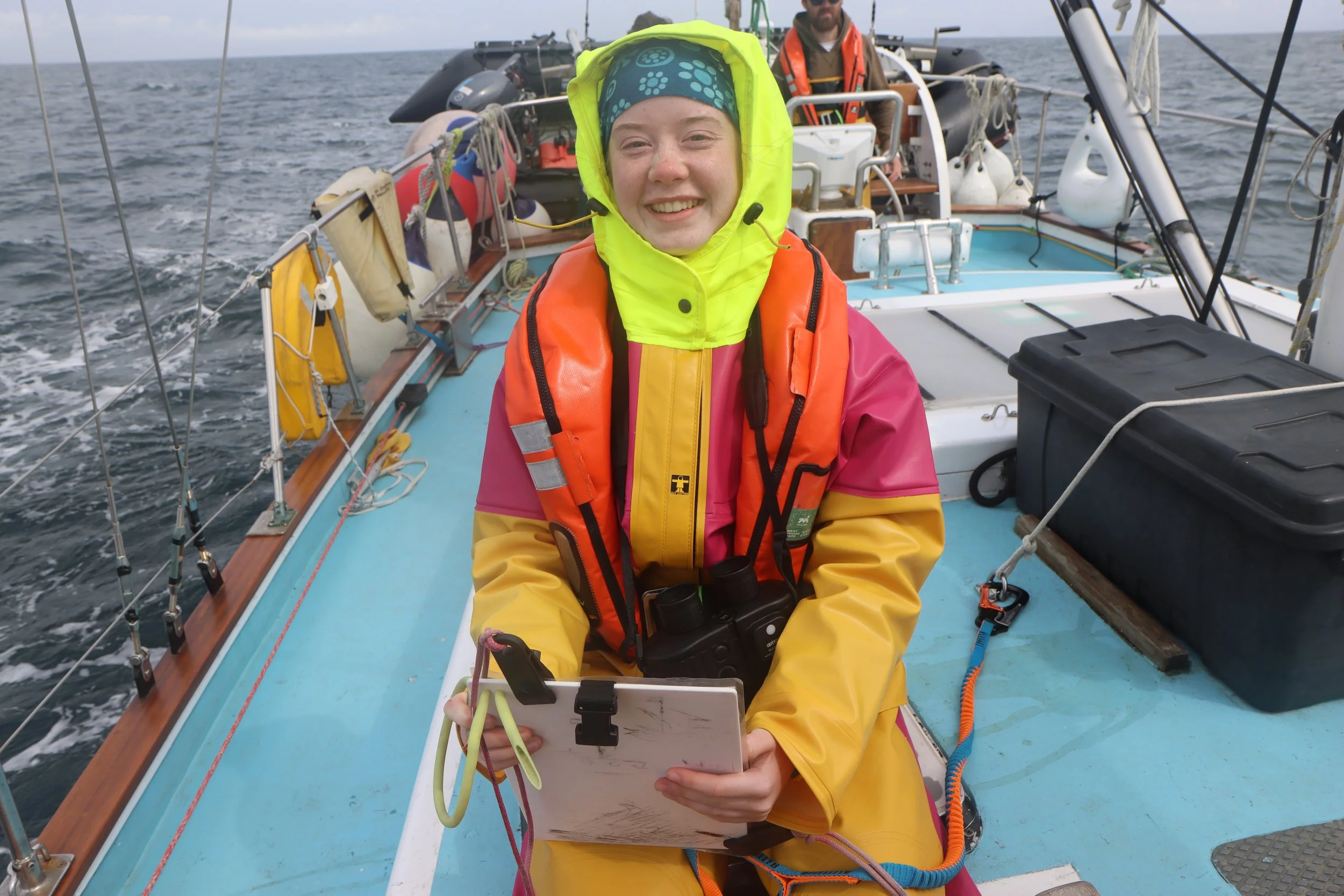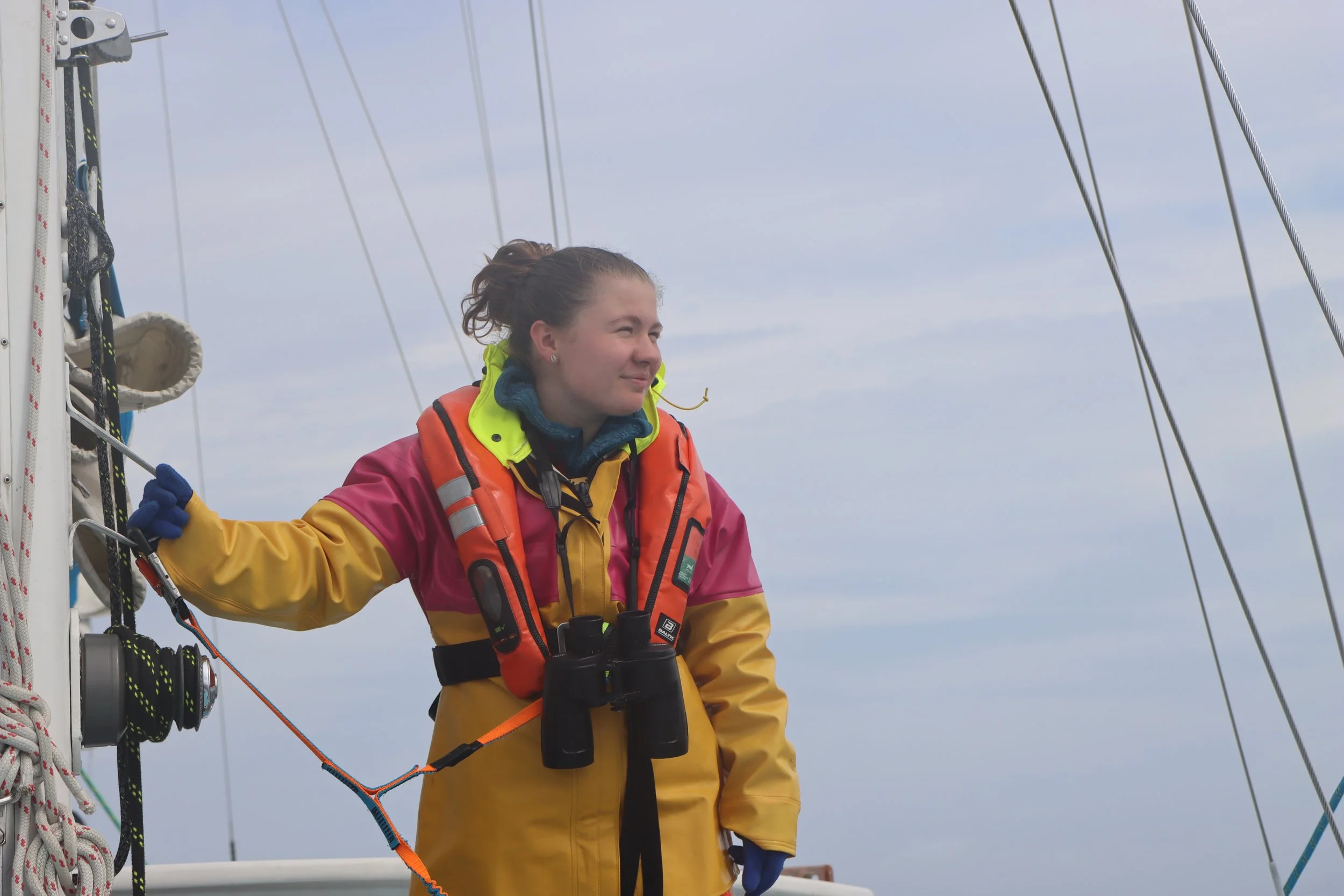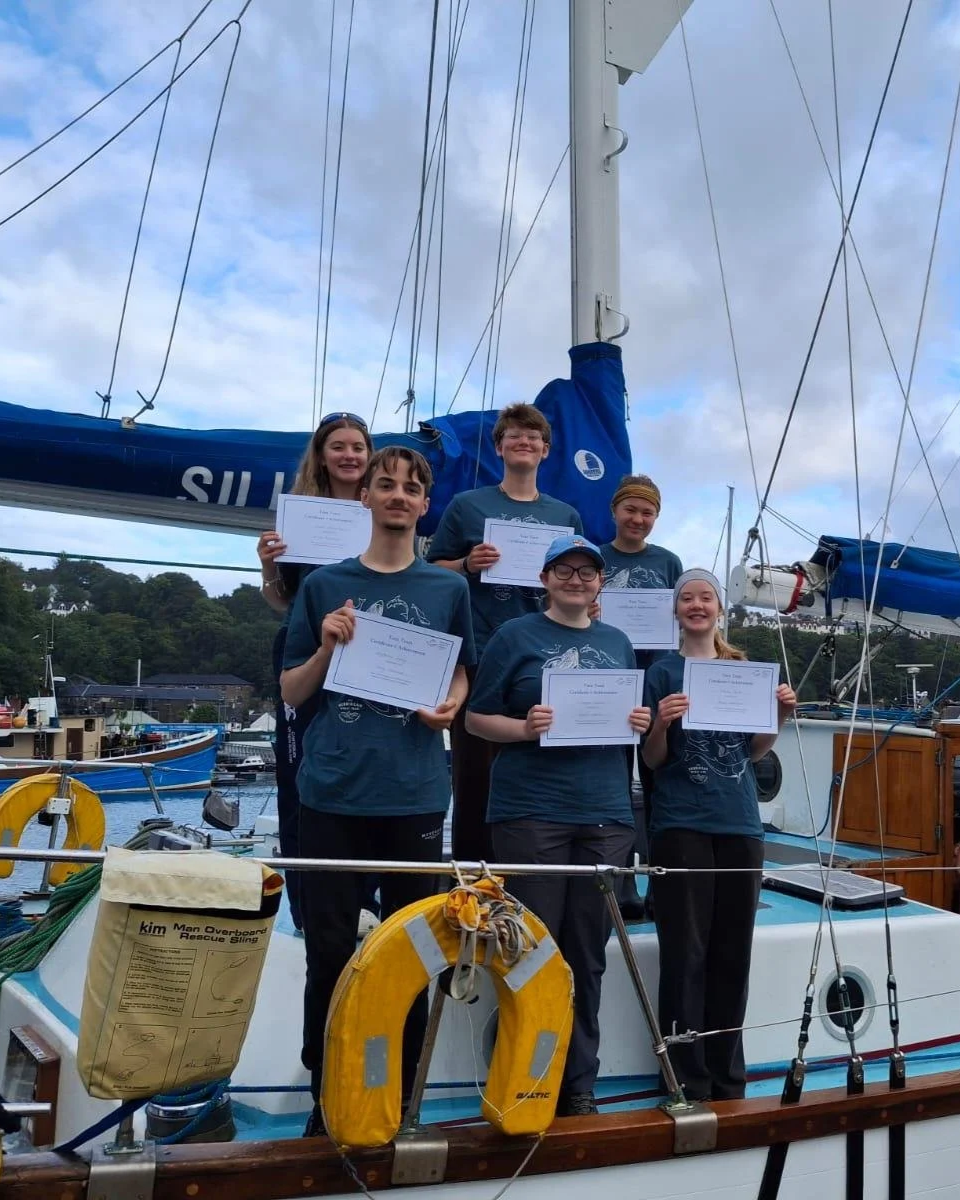Stormy seas, whirlpools and birds galore for our tough teens on the second teen expedition of the year!
With storm Floris in their sights, the teens on our second teen team of the year braved the wild waves to survey the Inner Hebrides.
Each year, we reserve two research expeditions for enthusiastic teen volunteers who join the crew to help safeguard marine life in the Hebrides. These intrepid young adults carry out full surveys just like any other volunteers. By collecting vital data, these hands-on voyages are helping to deepen the understanding of species and drive real change to protect the whales, dolphins, and porpoises off Scotland’s west coast.
The second teen expedition of the year got off to an exciting start as they were treated to the sight of common dolphins leaping and splashing out of the water, just a few hundred metres from the harbour before settling in for their first night on Silurian.
After a bumpy start to their expedition, sailing from Tobermory in Storm Floris, the teens welcomed the serene anchorage at Lochaline and wasted no time as our first volunteer stormed up the crow’s nest for a better view! With calmer seas on the third day and some sunshine to boot, the young volunteers enjoyed a day to remember with water fights, sight-seeing up the crow’s nest, delicious homemade brownies, and future first mates - as some of the teens took to the helm. After sailing all the way past Colonsay before back up to the north of Jura, the day ended at the famous whirlpool: the Corryvreckan. Spurred on by the change in weather and the beautiful setting, it wasn’t long before our teens donned their swimsuits and jumped straight in to round off the perfect day! Our final trip back to Tobermory was one for the birds, with more than 200 counted, including an artic skua, as we zigzagged our way along the Sound, passing no less than 47 yachts on the way!
The teenage voyagers surveyed 295km gathering over 30 hours of vital acoustic and visual data across the Inner Hebrides. Despite challenging conditions, the teens recorded sightings of harbour porpoises, grey seals and 1042 birds!
Despite the challenging conditions brought by the aftermath of Storm Floris, the teens showed impressive resilience and enthusiasm, completing full survey days using both visual and acoustic methods.
Visual conditions weren’t always ideal - sea state, visibility, and swell height often resulted in ‘poor’ sightability - but their dedication to observing marine life remained strong. Even with limited sightings, their efforts are scientifically valuable. As we always say: no data is still data.
Our effort-based surveys log time, distance, and all sightings along transect lines. This provides both presence and absence data, helping identify important marine areas even when nothing is seen.
Effort-based data is the gold standard because time and distance affect detection. It allows us to estimate relative abundance - how many animals are seen per unit distance.
Understanding abundance is essential for assessing species status. Without it, it's difficult to track trends or evaluate the impacts of human activities. This kind of data underpins evidence-based conservation and effective management decisions.
A HUGE THANK YOU TO OUR TEAM OF CITIZEN SCIENTISTS WHO JOINED THIS EXPEDITION: HARRY, SARAH, EDIE, POPPY, MILLIE & AILEEN

